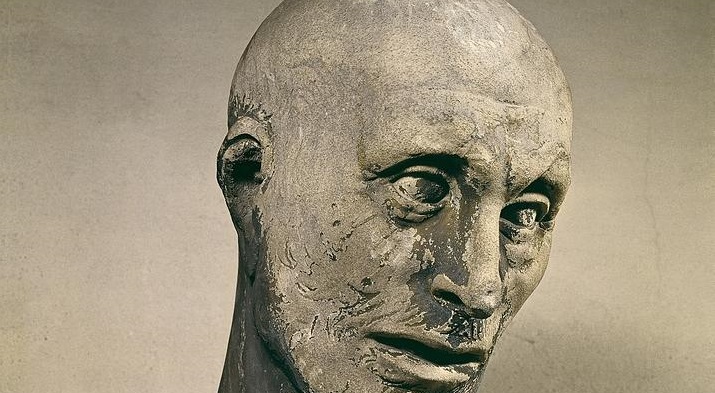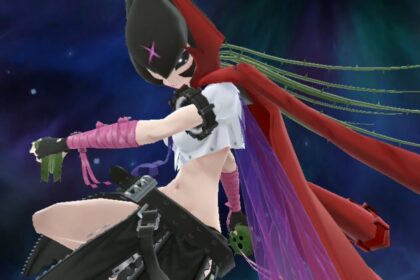Donato di Niccolo di Betto Bardi, better known as Donatello, was an Italian Renaissance sculptor from Florence. He studied classical sculpture and used this to develop a complete Renaissance style in sculpture, whose periods in Rome, Padua and Siena introduced to other parts of Italy a long and productive career. Take a look below for 26 more fun and interesting facts about Donatello.
1. He worked with stone, bronze, wood, clay, stucco and wax, and had several assistants, with four perhaps being a typical number.
2. Though his best known works were mostly statues in the round, he developed a new, very shallow, type of bas-relief for small works, and a good deal of his output was larger architectural reliefs.
3. He was born in 1386, in Florence, Italy, to Niccolo di Betto Bardi.
4. His father was a member of the Florentine Wool Combers Guild.
5. Young Donatello attained his early education from the Martelli’s, an influential and wealthy Florentine family. His stint with art and sculpture started early, as he received his artistic training in a goldsmith’s workshop.
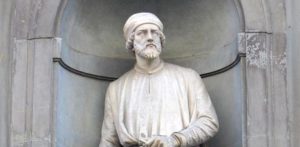
6. He gained knowledge about metallurgy and fabrication of metals and other substances.
7. In 1403, he apprenticed at the studio of Lorenzo Ghiberti, learning the nuances of Gothic sculpting. Later, he assisted Ghiberti who was commissioned to create bronze doors for the Florentine Baptistery.
8. He befriended Filippo Brunelleschi. The two then undertook a tour of Rome from 1404 to 1407, excavating the ruins to study classical art. It was during the trip that Donatello developed an understanding of ornamentation and classical forms.
9. The tour casted a deep influence on both Brunelleschi and Donatello, thereby changing the face of Italian art in the 15th century.
10. Returning to Florentine in 1408, he took to working at the workshops of Cathedral in Florence.
11. He assisted Ghiberti for the statues of prophets that were likely to be erected at the north door of the Cathedral.
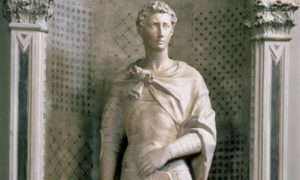
12. By 1408, he completed the life-size marble sculpture of David. It was among the earliest works of Donatello and lacked the emotional touch and inventiveness that formed a vital part of his latter works.
13. David, originally intended for the Cathedral, was moved to Palazzo Vecchio in 1416 as a mark of the Florentine Republic.
14. From 1409 to 1411, he worked on the colossal seated figure of Saint John the Evangelist. The sculpture marked the shift in Donatello’s gothic work infusing realism and naturalism.
15. From 1411 to 1413, he worked on a statue of St. Mark for the guild church of Orsanmichele. Thereafter, he started working on the sculpture of Saint George for the Confraternity of the Cuirass-makers which he completed in 1417.
16. From 1423, he started working on the Saint Louis of Toulouse for the Orsanmichele, which is today placed in the Museum of the Basilica di Santa Croce. Originally, he also sculpted the framework for the work.
17. From 1415 to 1426, he worked on five statues that were essentially created for the campanile of Santa Maria del Fiore in Florence.
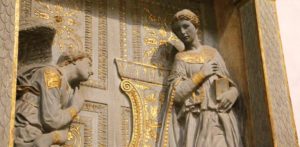
18. Between 1425 and 1427, he befriended architect and sculptor Michelozzo. The two traveled to Rome and worked on several architectural and sculptural tombs, including the tomb of Antipope John XXIII and Cardinal Rainaldo Brancacci.
19. In the course of his artistic life, Donatello had developed close relations with several art patrons, including Cosimo de’ Medici.
20. During Cosimo’s period of exile, Donatello traveled to Rome. He returned only in 1433, but not before leaving his mark on the city’s classical art facade with his two works, Tomb of Giovanni Crivelli at Santa Maria in Aracoeli, and the Ciborium at St. Peter’s Basilica.
21. Before travelling to Padua in 1443, he finished a couple of projects including Annunciation for the Cavalcanti altar in Santa Croce, the wooden statue of St. John he Evangelist for Santa Maria Gloriosa dei Frari in Venice and a bust of a Young Man with a Cameo.
22. Returning to Florence in 1453, he remained in Seina and created a St. John the Baptist for the Duomo, and models for its gates, the work which is now lost.
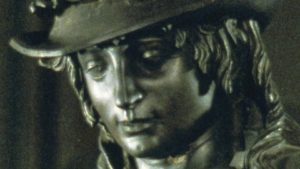
23. His greatest work was the bronze statue of David. The most interesting aspect of the sculpture was its free-standing nature. It was so brilliantly proportioned and poised that it stood independently, without any architectural setting.
24. If anecdotes by Angelo Poliziano in his “Detti piacevoli” or studies of his magnum opus are to be believe, Donatello was a homosexual.
25. He died of unknown reasons on December 13, 1466, in Florence. He was buried in the Basilica of San Lorenzo, next to Cosimo de’ Medici.
26. Posthumously, an unfinished work was completed by his student Bertoldo di Giovanni.

